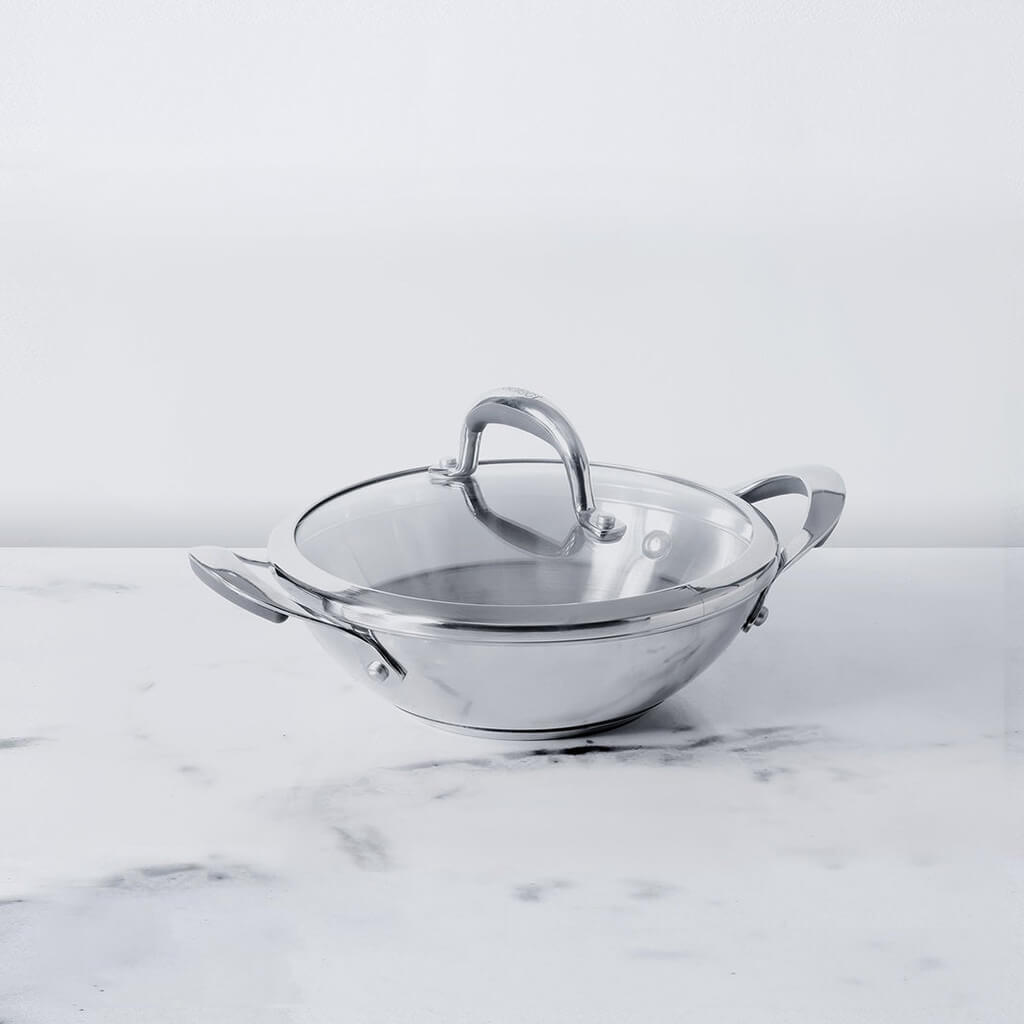Non-stick pressure cookers have become a popular choice in modern kitchens due to their ease of use and convenience. However, like any other cookware, they come with advantages and limitations. Understanding the pros and cons can help you decide whether a non-stick pressure cooker suits your cooking needs.
Table of Contents
- What is a Non-Stick Pressure Cooker?
- Pros of Non-Stick Pressure Cookers
- Cons of Non-Stick Pressure Cookers
- Who Should Use Non-Stick Pressure Cookers?
- Tips for Using and Maintaining Non-Stick Pressure Cookers
- Alternatives to Non-Stick Pressure Cookers
- Final Verdict
What is a Non-Stick Pressure Cooker?
A non-stick pressure cooker features an interior coated with a non-stick layer, typically made of Teflon (PTFE) or ceramic. This coating prevents food from sticking to the surface, making cooking and cleaning more convenient. The pressure cooker itself can be made of aluminum or stainless steel, with the non-stick layer applied to the inner surface.

Pros of Non-Stick Pressure Cookers
1. Easy Food Release
-
The non-stick coating ensures that food doesn’t stick to the surface, making it ideal for cooking sticky or delicate dishes such as rice, porridge, and sauces.
-
Prevents food wastage as every bit can be easily removed.
2. Effortless Cleaning
-
Non-stick surfaces are easy to clean and usually require just a gentle wipe or rinse.
-
Reduces the need for scrubbing or soaking, saving time and effort.
3. Healthier Cooking
-
Requires less oil or fat for cooking, making it suitable for low-fat diets.
-
Ideal for health-conscious individuals who want to reduce calorie intake.
4. Energy Efficiency
-
Non-stick surfaces distribute heat evenly, leading to faster cooking times.
-
Prevents food from burning and sticking, which can impact energy efficiency in traditional cookware.
5. Versatility
-
Suitable for a variety of recipes, including sautéing, steaming, and pressure-cooking.
-
Ideal for beginners due to its forgiving nature.
6. Aesthetic Appeal
-
Modern non-stick pressure cookers often come in sleek designs and colors, enhancing kitchen aesthetics.
Cons of Non-Stick Pressure Cookers
1. Durability Concerns
-
Non-stick coatings are prone to scratches and wear over time, especially if metal utensils are used.
-
The lifespan of the coating is shorter than the pressure cooker body itself, requiring replacement or recoating.
2. Heat Sensitivity
-
Non-stick coatings can degrade when exposed to high temperatures, leading to peeling or flaking.
-
Not ideal for recipes requiring high-heat searing or browning.
3. Chemical Concerns (Teflon Coatings)
-
Some non-stick coatings, particularly Teflon, may release harmful fumes if overheated (above 260°C or 500°F).
-
Older non-stick coatings may contain PFOA, a chemical linked to health concerns, though most modern products are PFOA-free.
4. Maintenance Requirements
-
Requires careful handling to avoid scratching or damaging the coating.
-
Non-stick surfaces are not dishwasher-safe in many cases, necessitating manual cleaning.
5. Limited Longevity
-
Even with proper care, non-stick coatings degrade over time and lose their effectiveness.
-
Frequent replacement can make it less cost-effective in the long run compared to uncoated pressure cookers.
6. Not Suitable for All Recipes
-
Recipes that require caramelization or crispy textures may not perform well in a non-stick cooker.
-
Non-stick surfaces may not develop the same depth of flavor as traditional cookware due to limited browning.
7. Environmental Impact
-
Non-stick coatings are synthetic and may contribute to environmental waste when discarded.
-
Disposal of worn-out non-stick cookware can pose ecological concerns.
Meyer Bakemaster Round Cake Pan
Who Should Use Non-Stick Pressure Cookers?
Non-stick pressure cookers are ideal for:
-
Beginners who want a hassle-free cooking experience.
-
Health-conscious individuals who prefer low-oil or no-oil cooking.
-
People who frequently cook sticky foods like rice or porridge.
-
Those who prioritize easy cleaning and maintenance.
Tips for Using and Maintaining Non-Stick Pressure Cookers
-
Use Non-Metal Utensils: Opt for silicone, wooden, or plastic utensils to prevent scratching the coating.
-
Avoid High Heat: Cook at medium or low heat to preserve the integrity of the non-stick layer.
-
Hand Wash Only: Avoid dishwashers unless specified as dishwasher-safe by the manufacturer.
-
Use Soft Sponges: Clean with a soft sponge or cloth to prevent abrasions.
-
Store Properly: Stack with care or use protective pads to avoid surface damage.
-
Inspect Regularly: Check for peeling or flaking coatings, and replace the cooker if the coating deteriorates.
Alternatives to Non-Stick Pressure Cookers
If the drawbacks of non-stick pressure cookers outweigh the benefits for you, consider:
-
Stainless Steel Pressure Cookers: Durable, non-reactive, and suitable for high-heat cooking.
-
Hard Anodized Pressure Cookers: Offer a naturally non-stick surface without chemical coatings.
-
Traditional Aluminium Pressure Cookers: Affordable and efficient for everyday use, though not non-stick.
Final Verdict
Non-stick pressure cookers are a convenient and versatile option for modern kitchens, particularly for cooking delicate or sticky foods with minimal effort. However, they require careful handling and regular maintenance to ensure longevity and safety. Consider your cooking habits, budget, and health priorities before investing in a non-stick pressure cooker.











Leave a comment